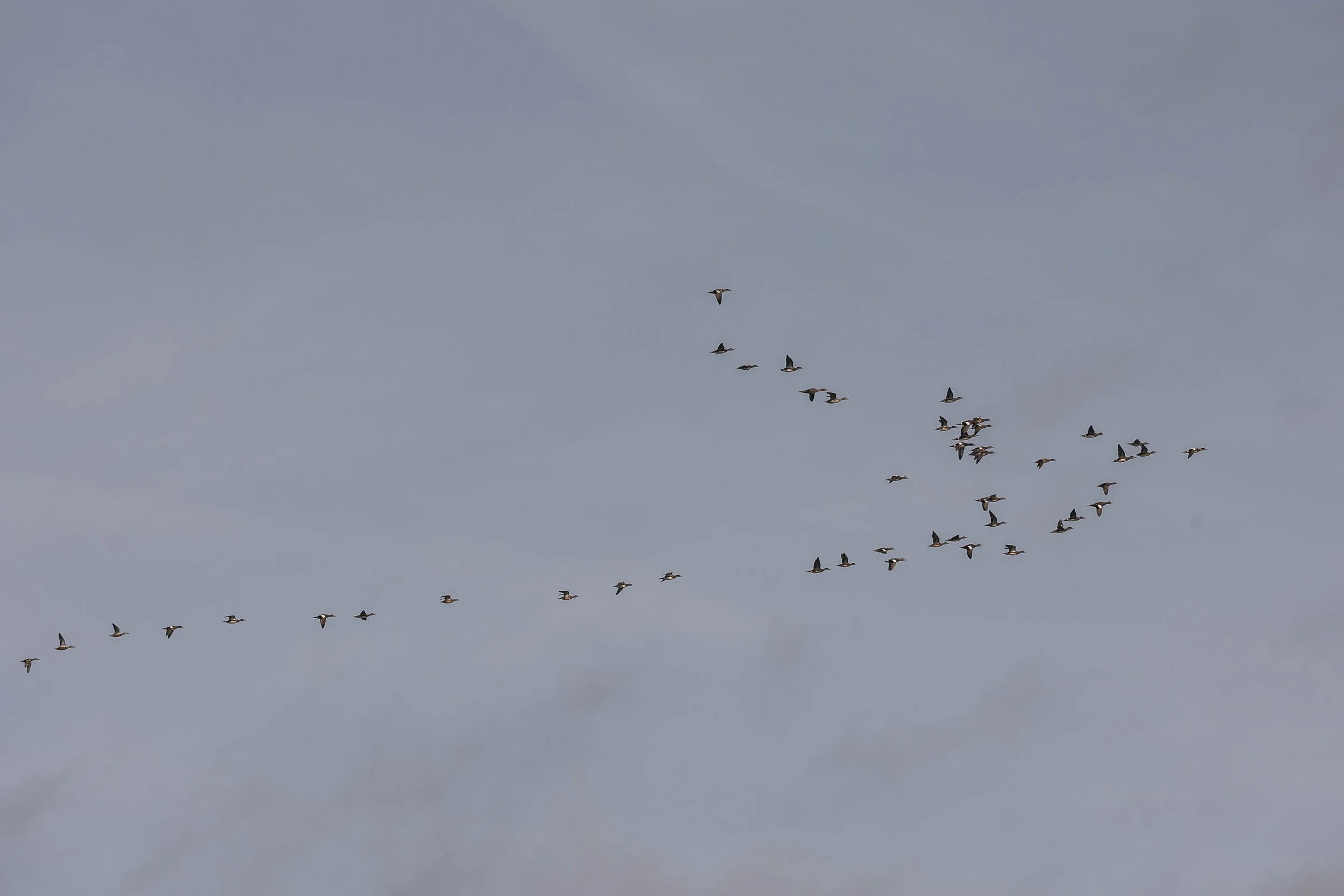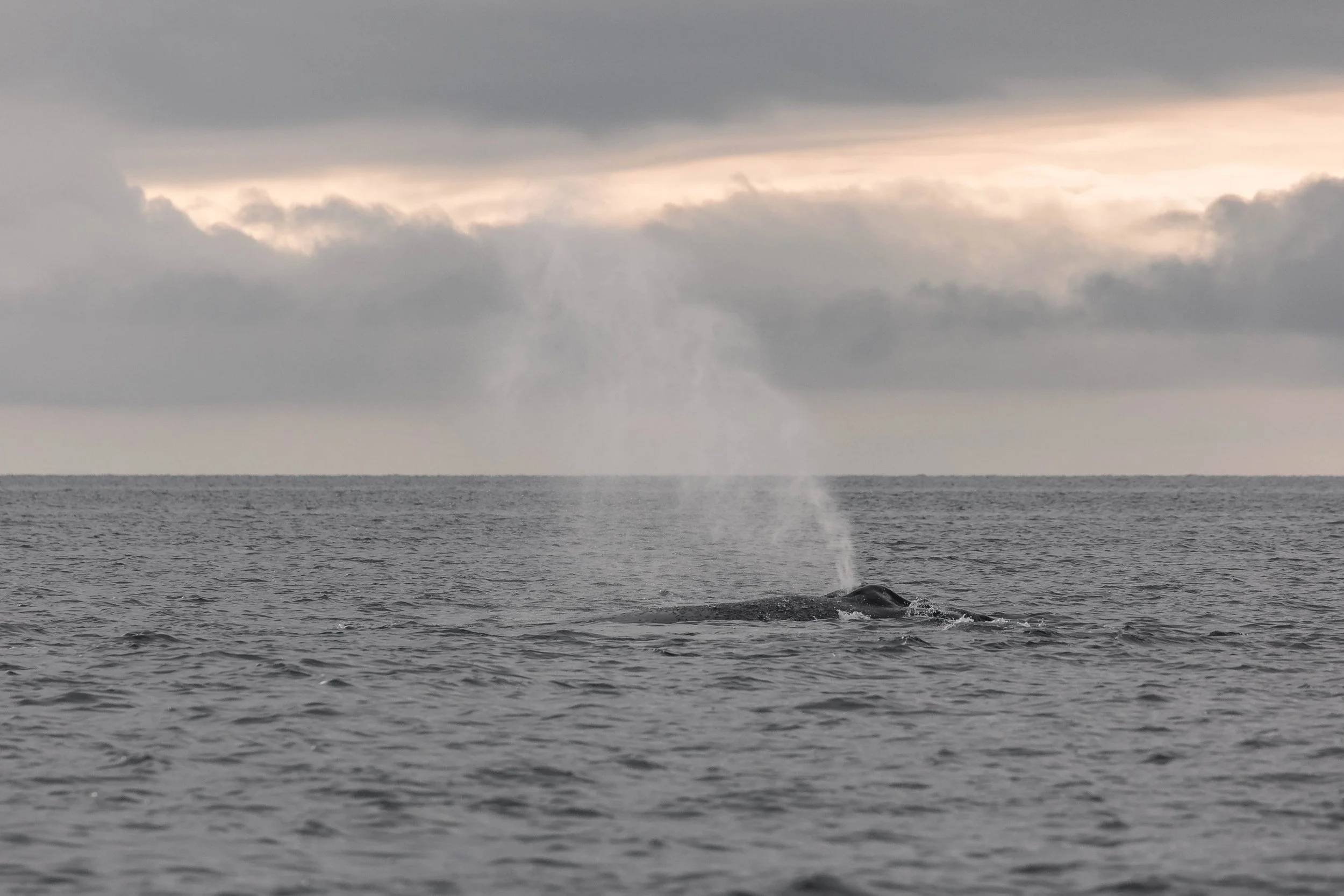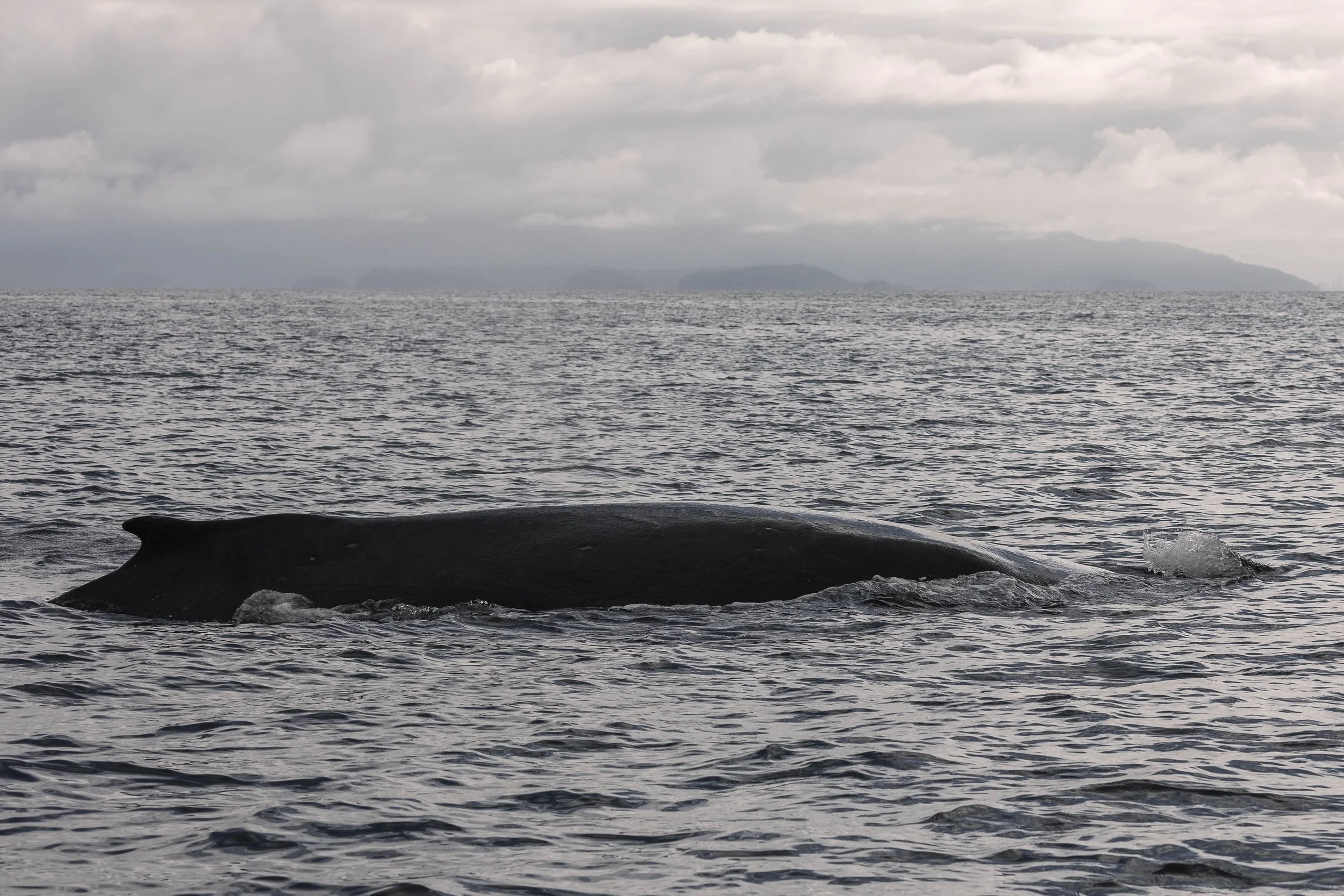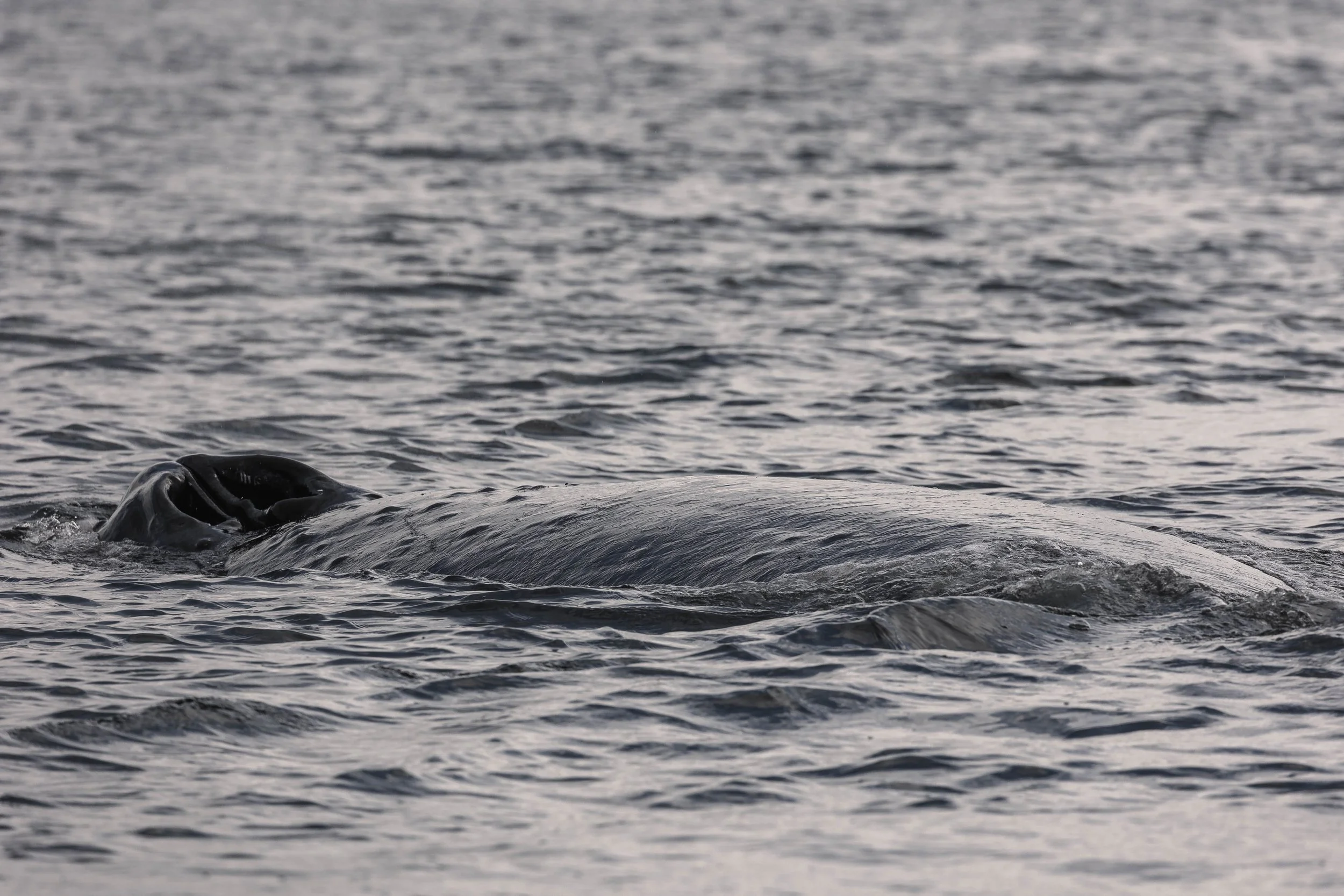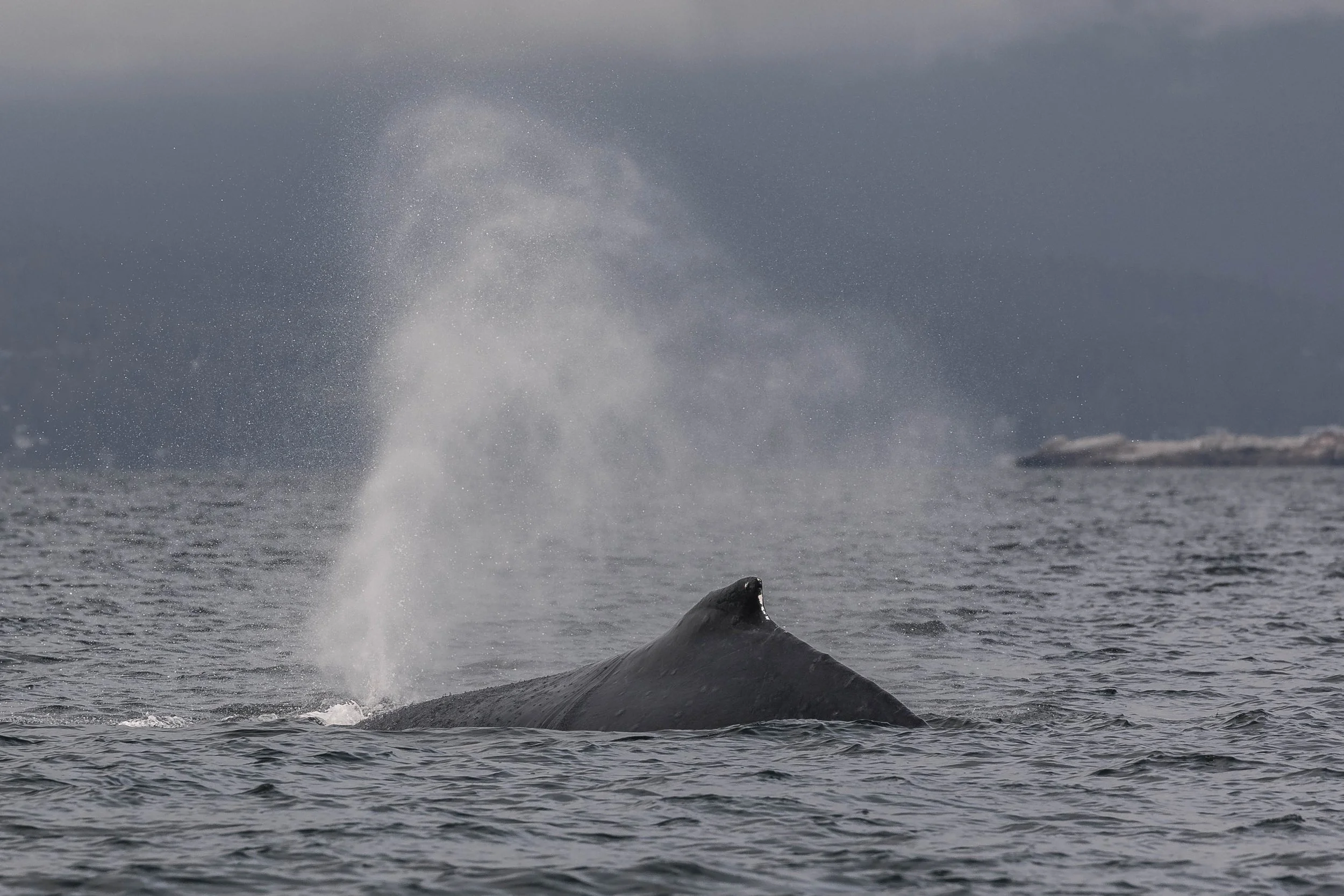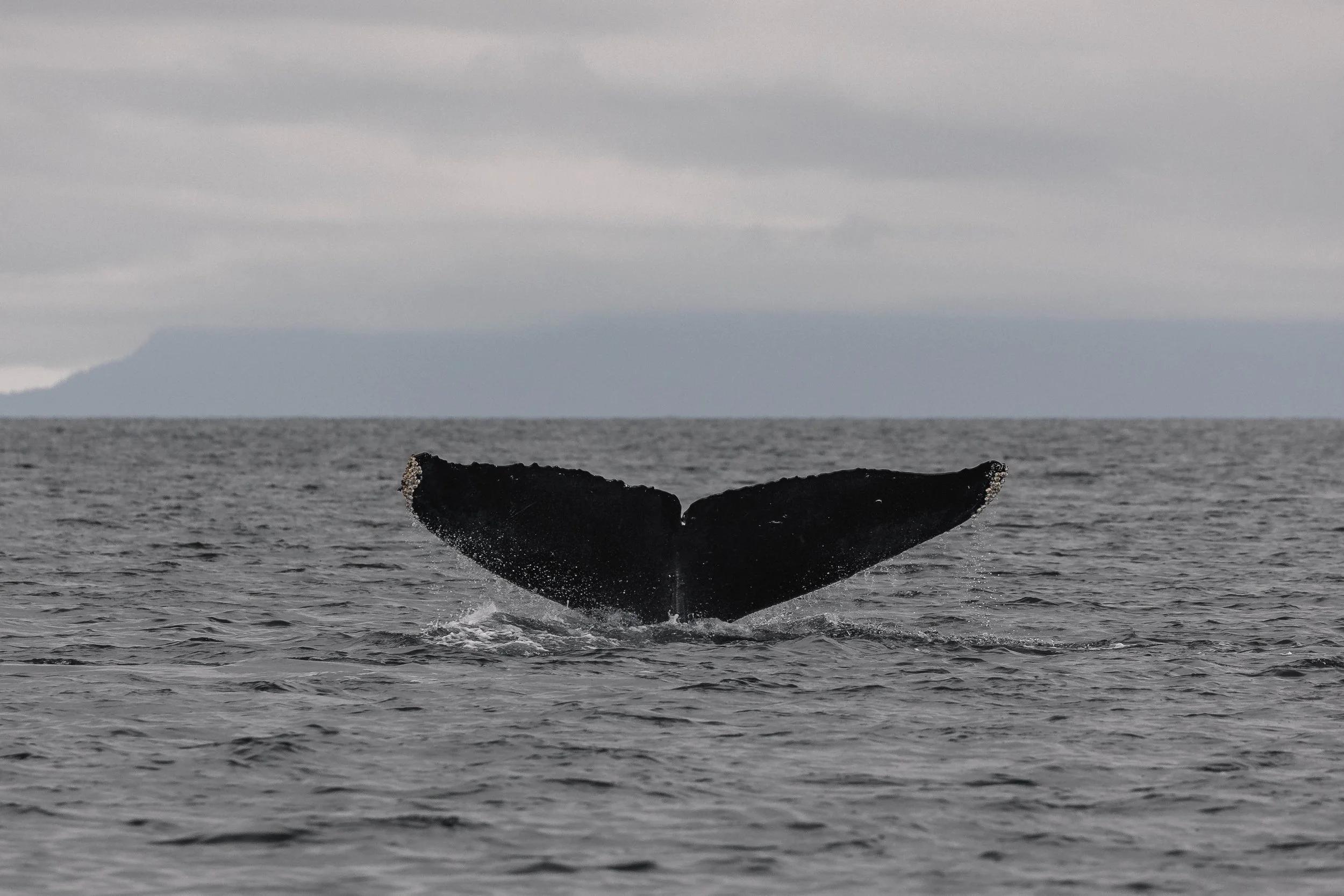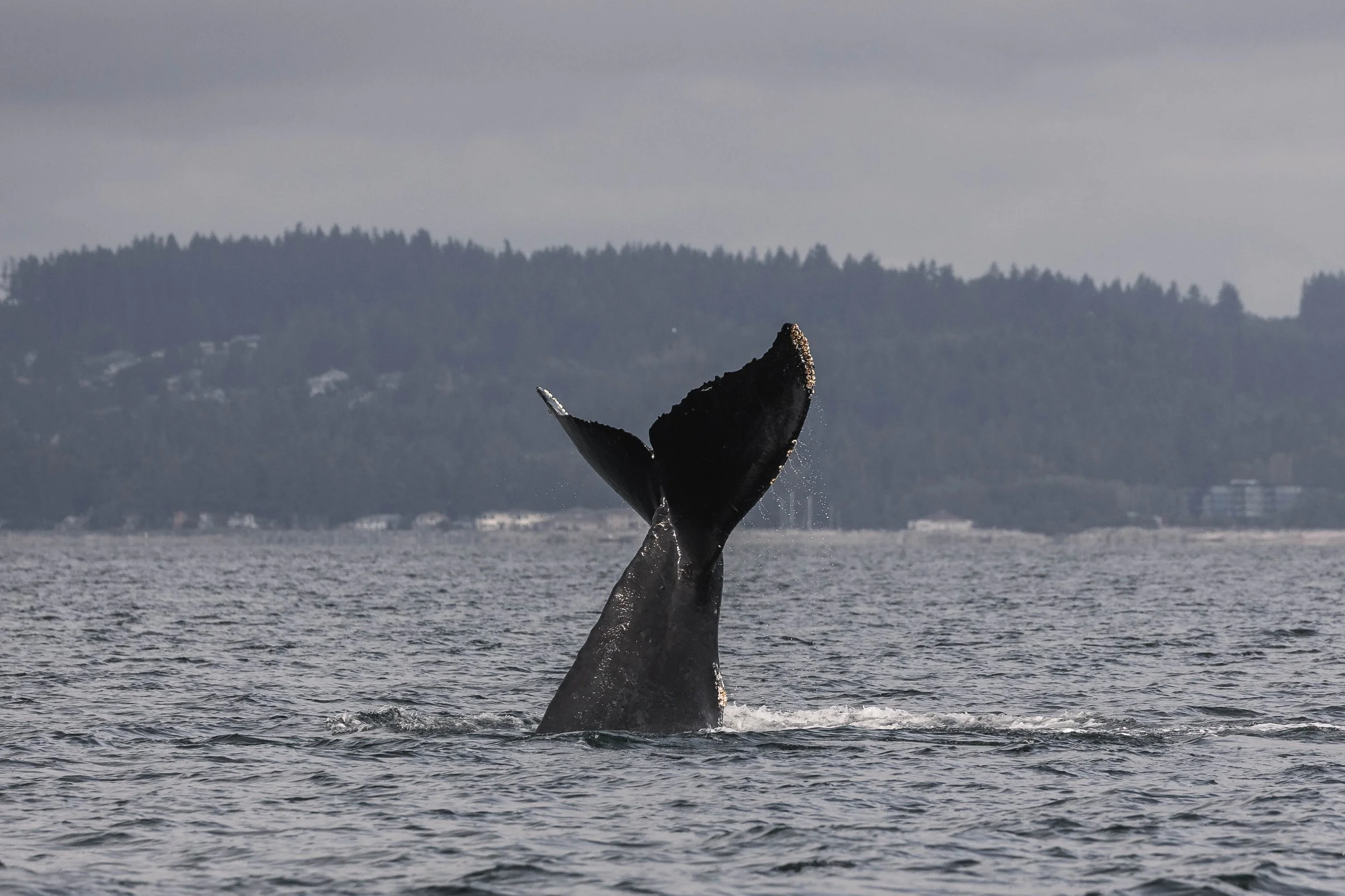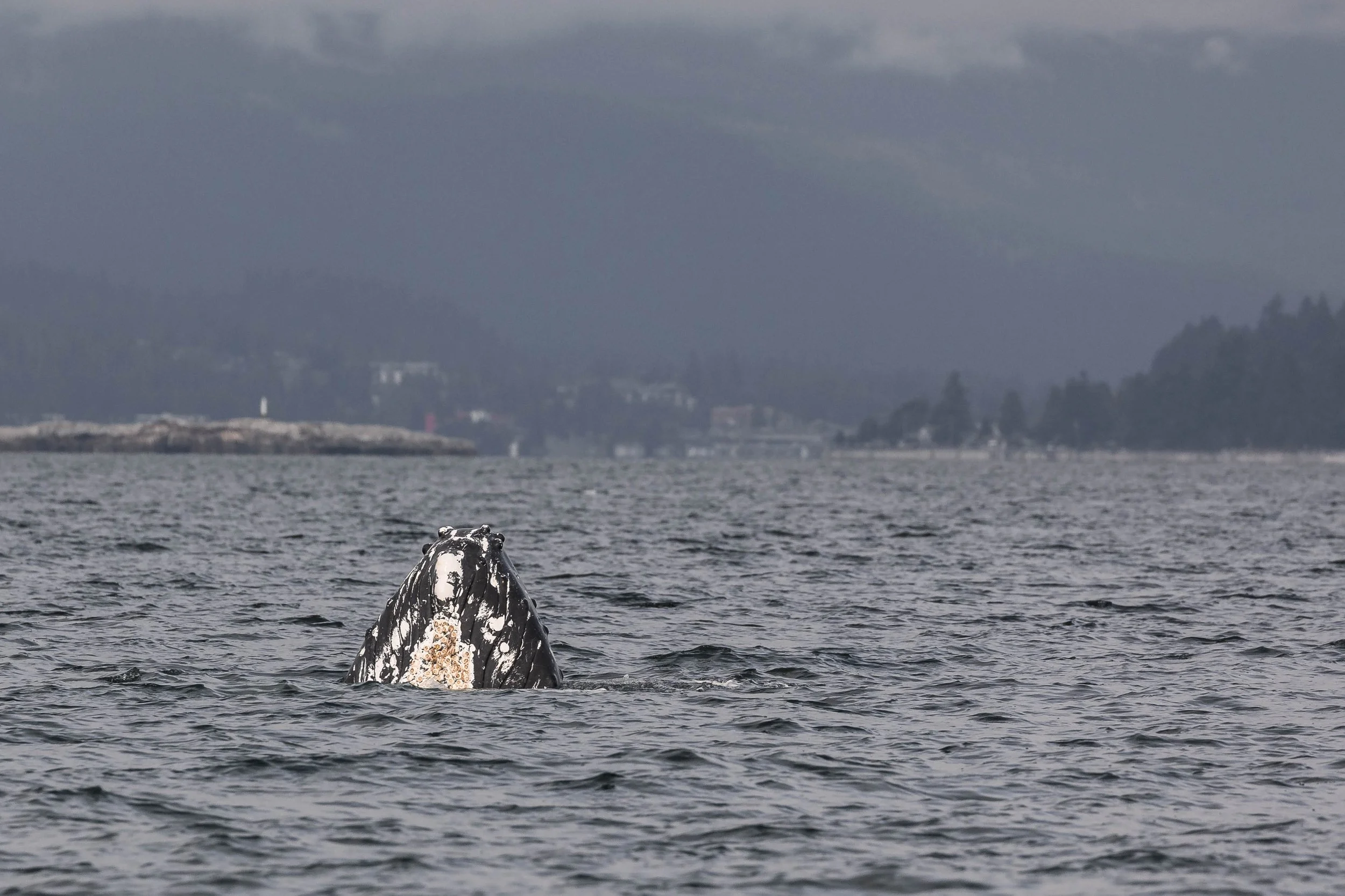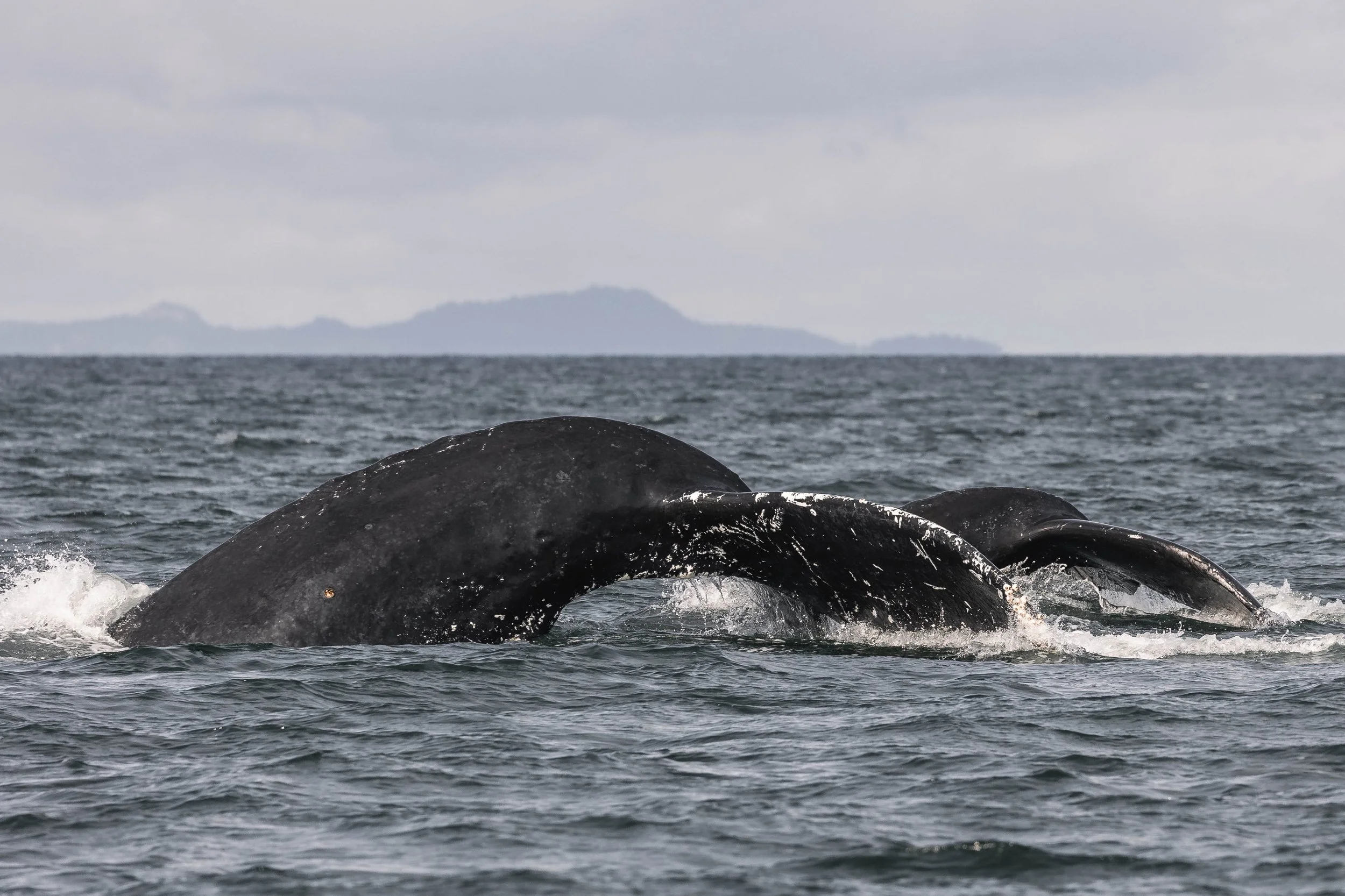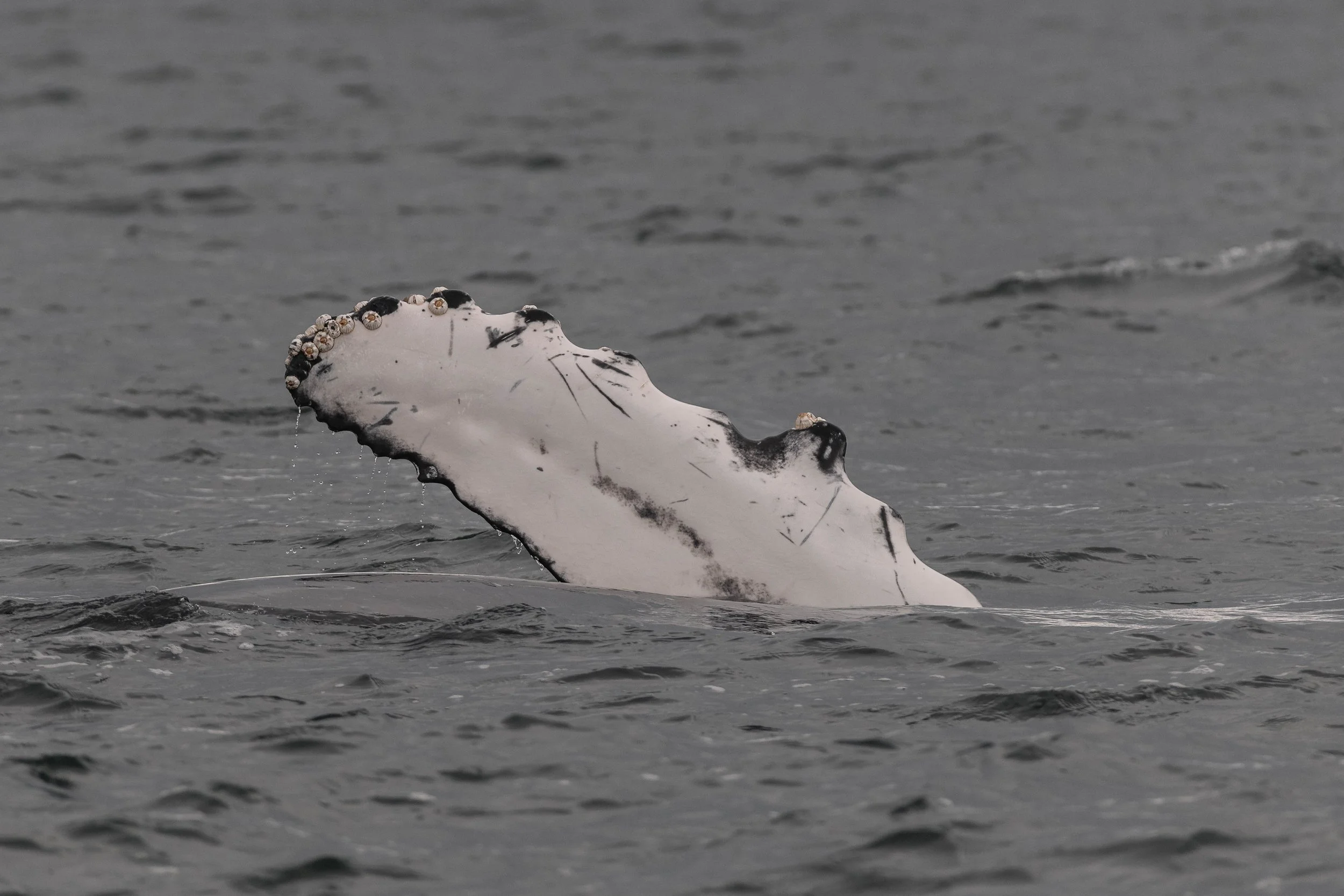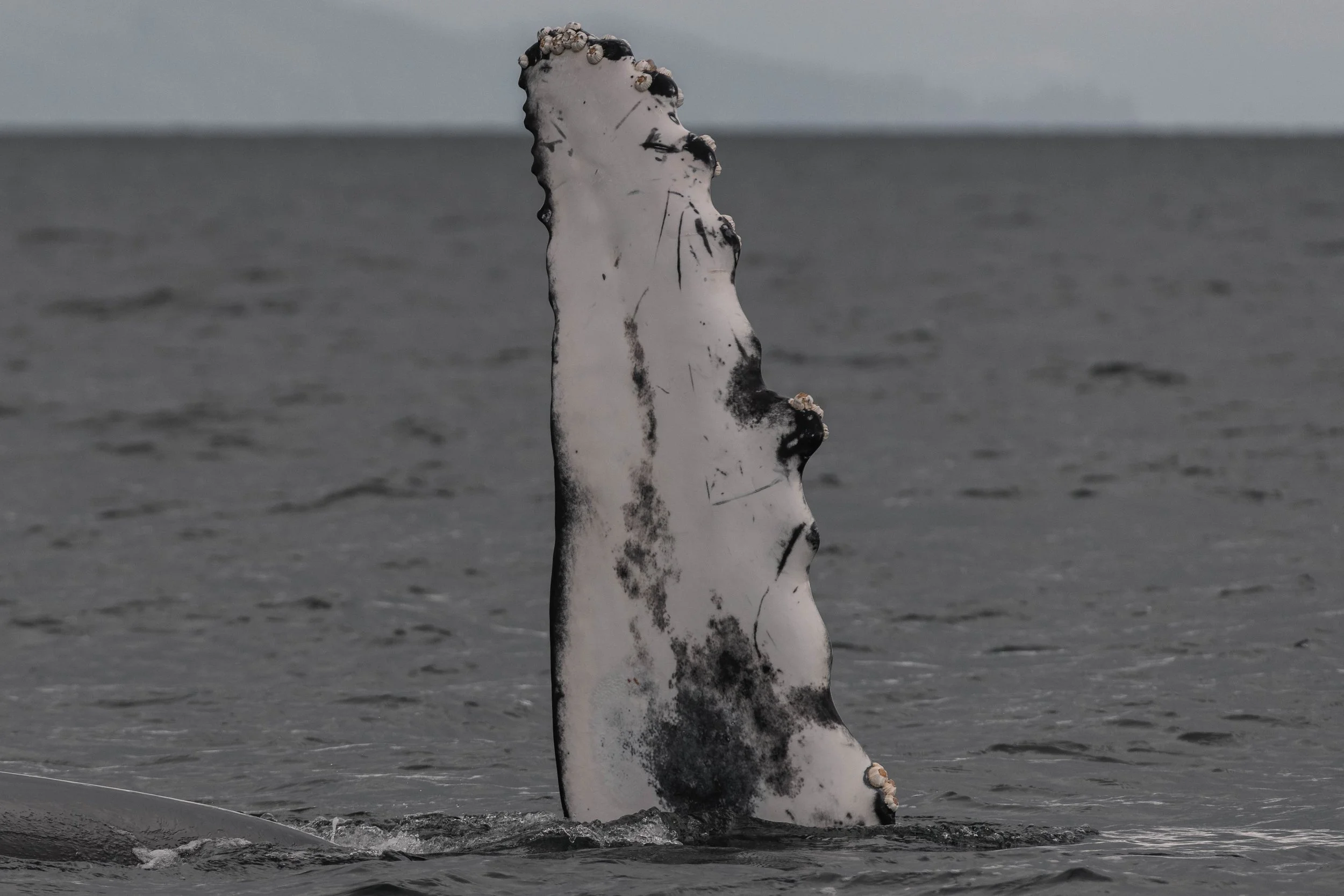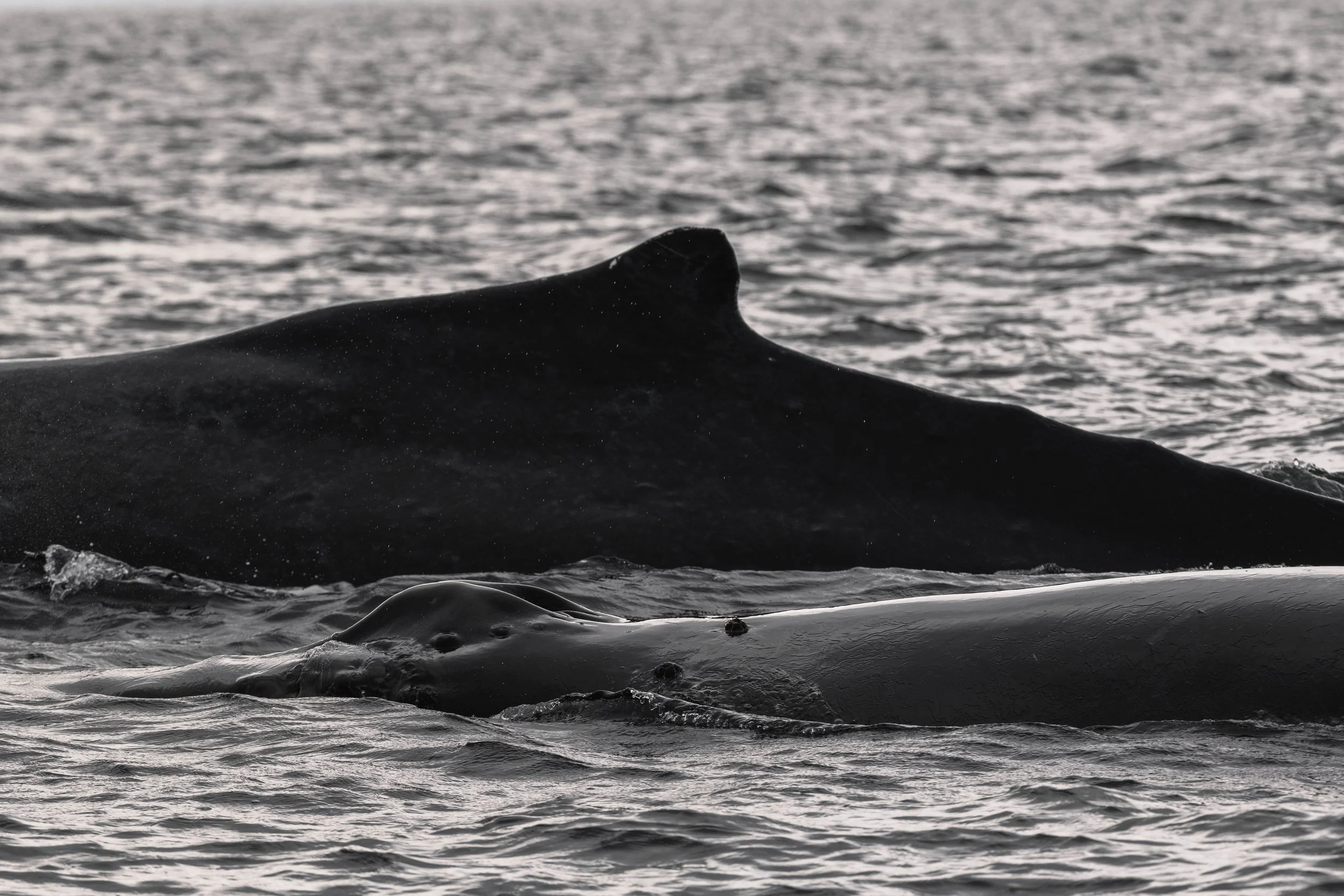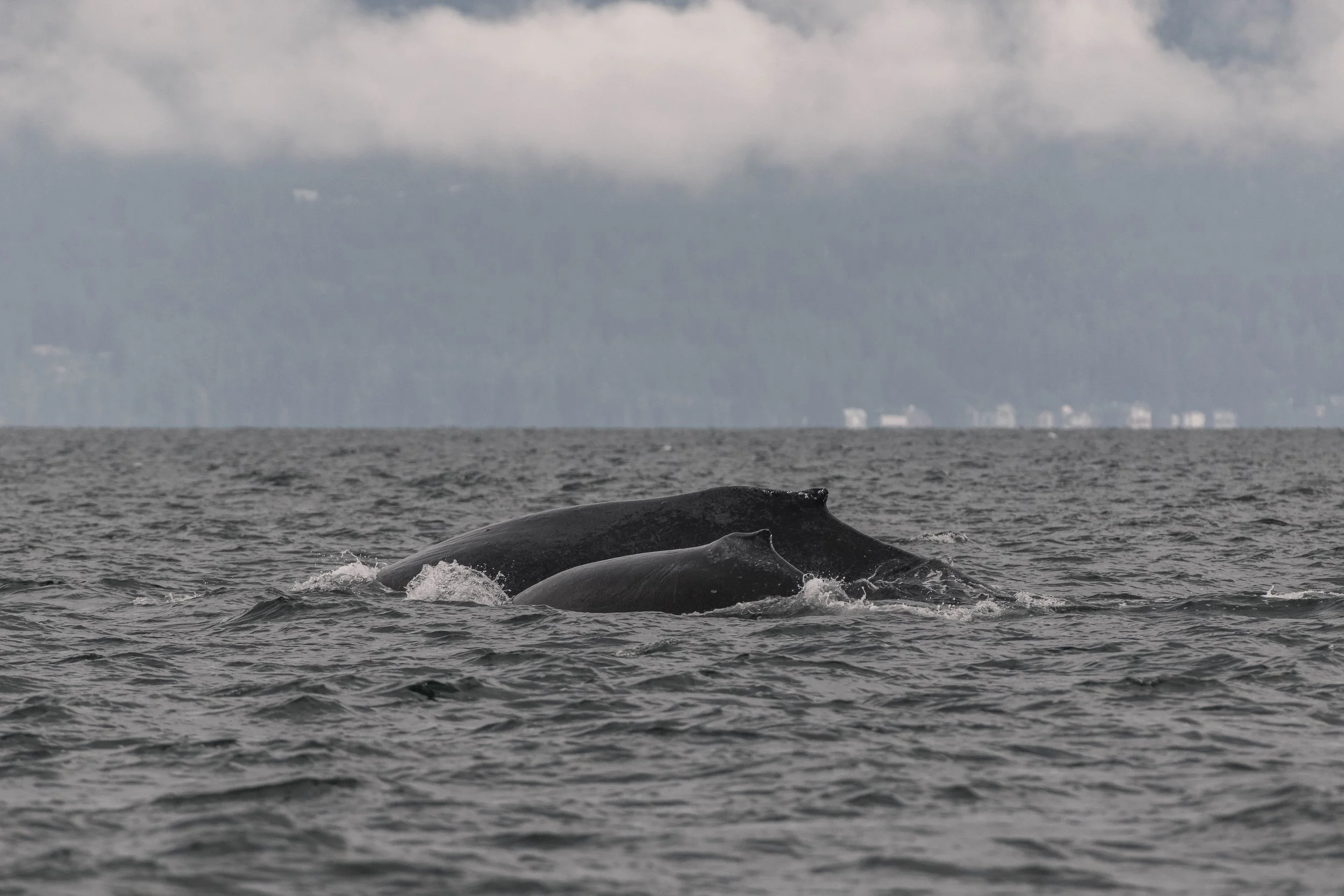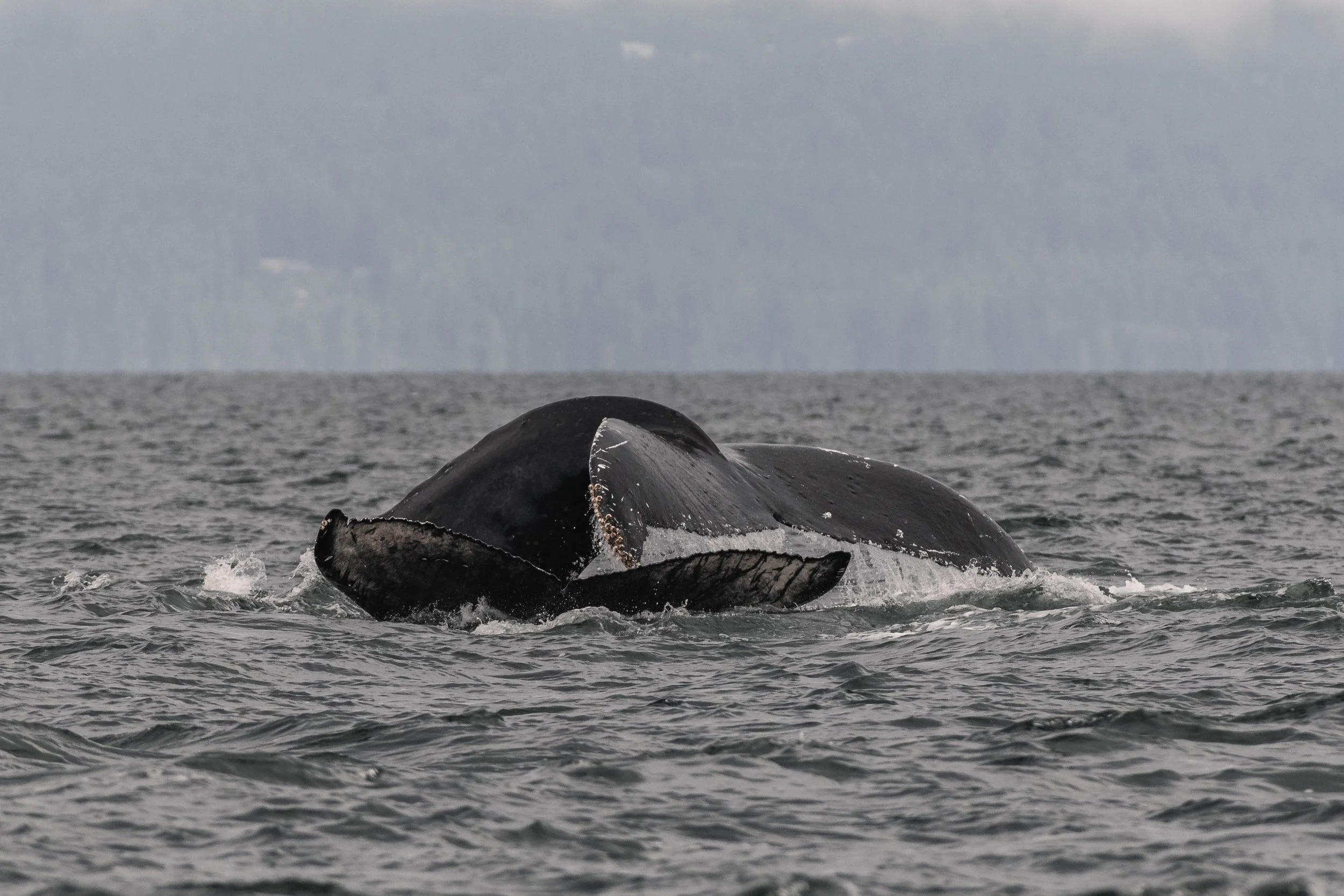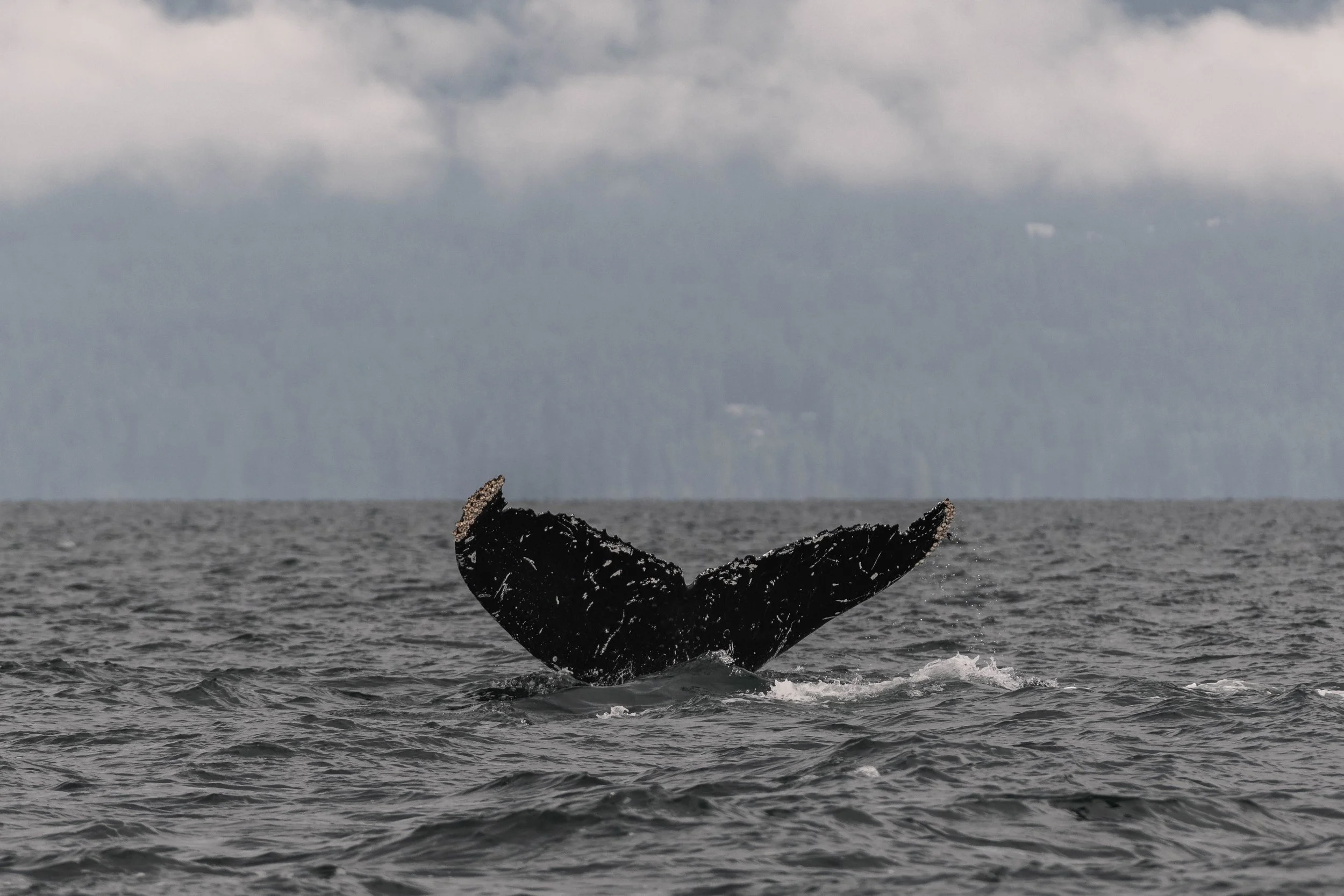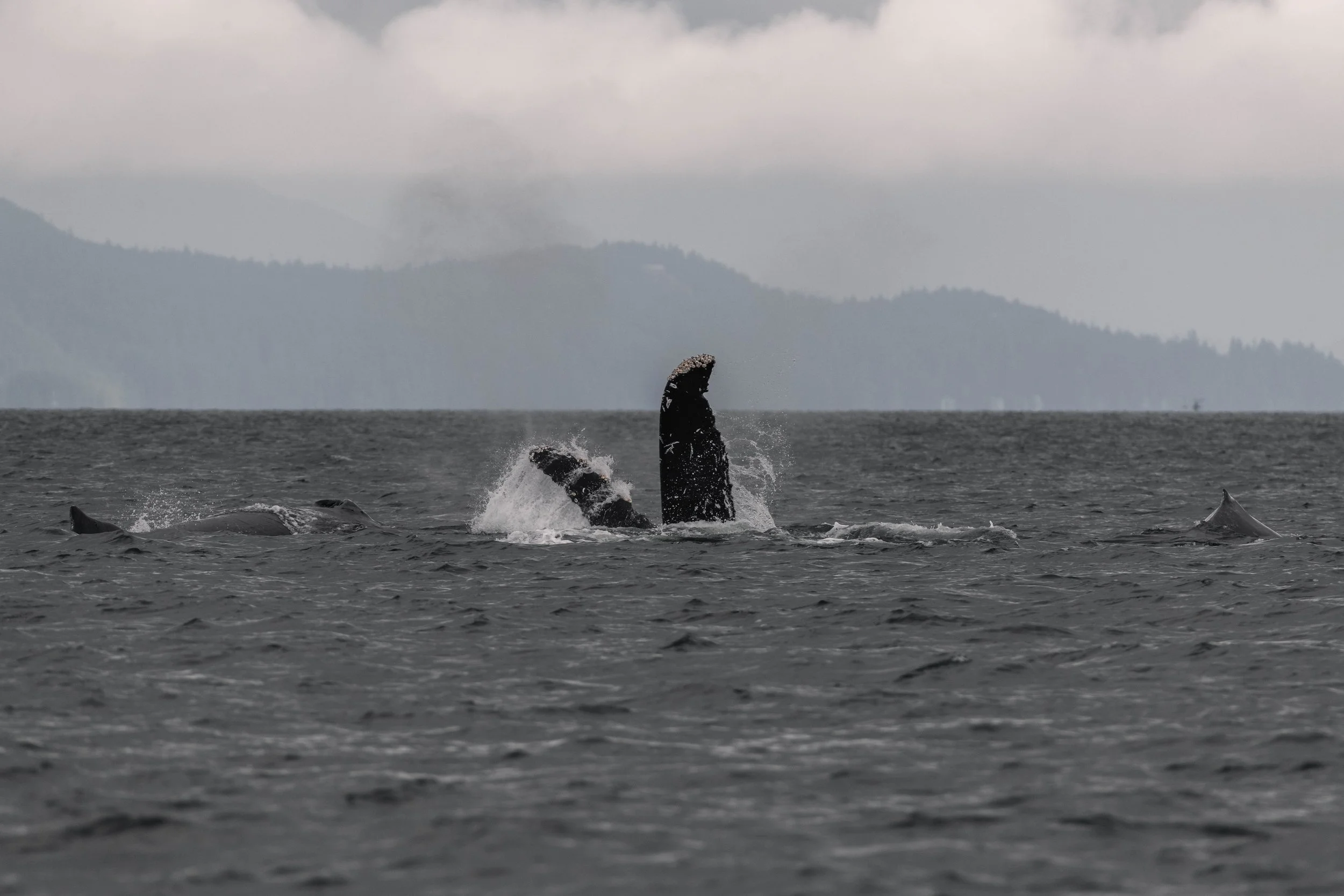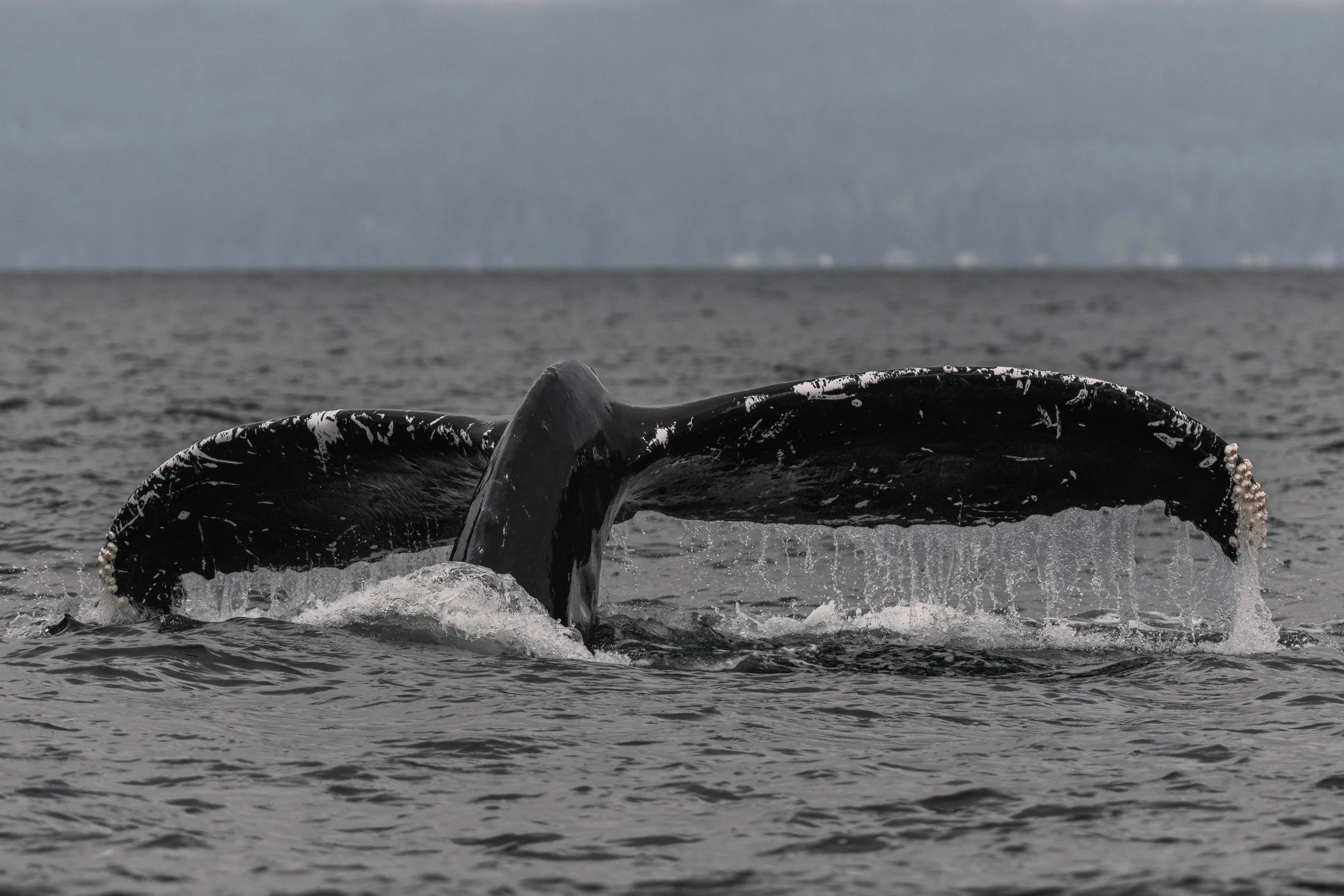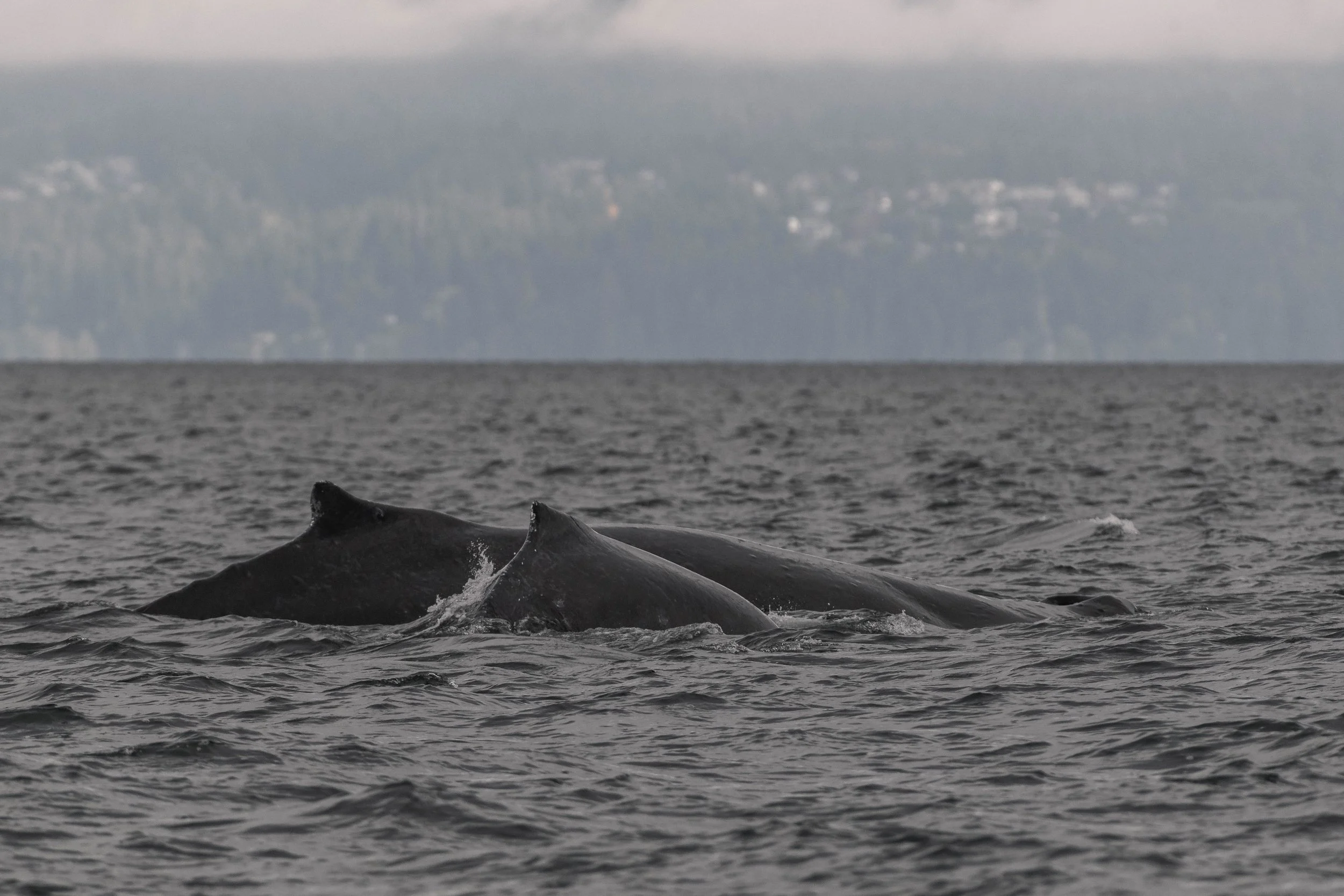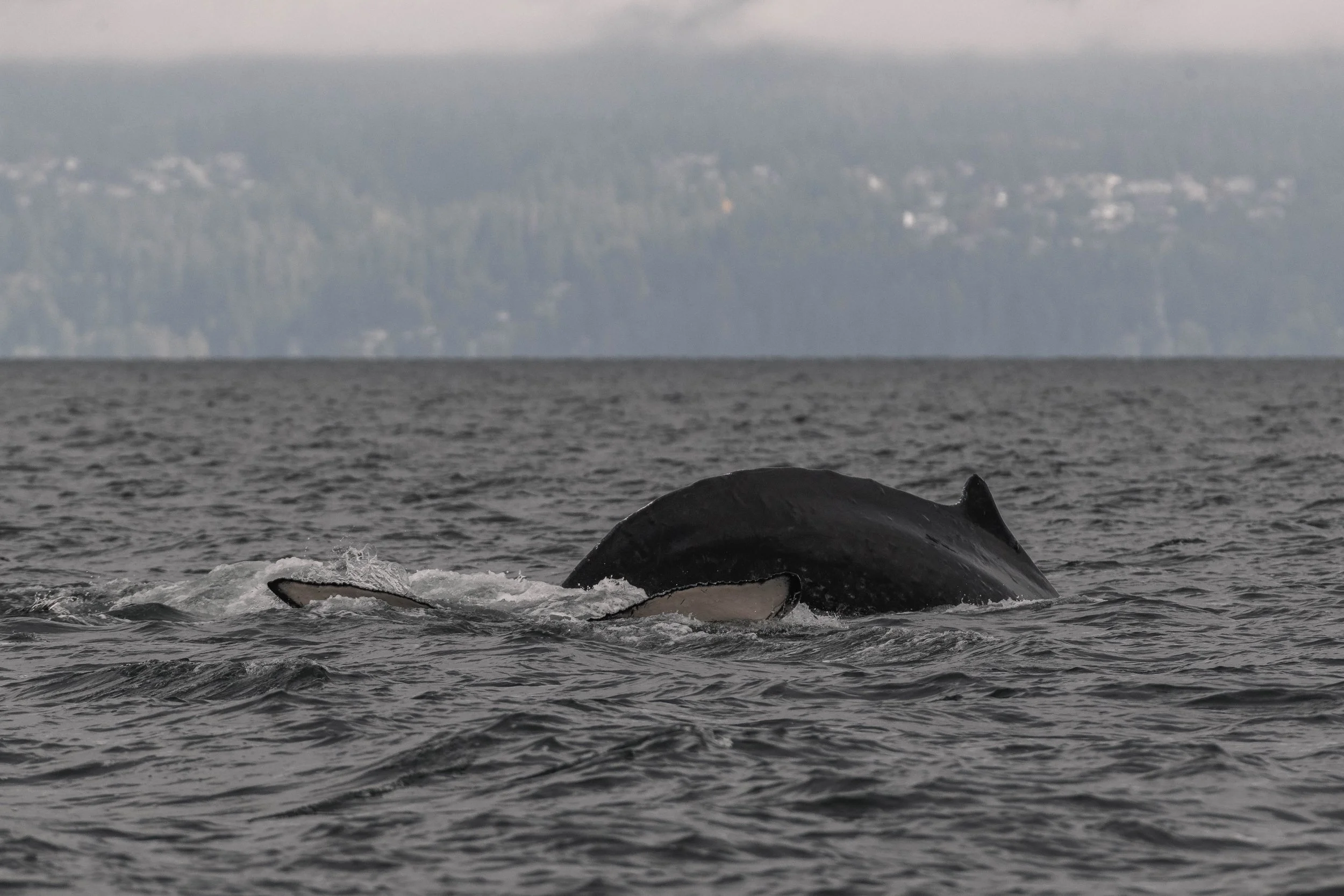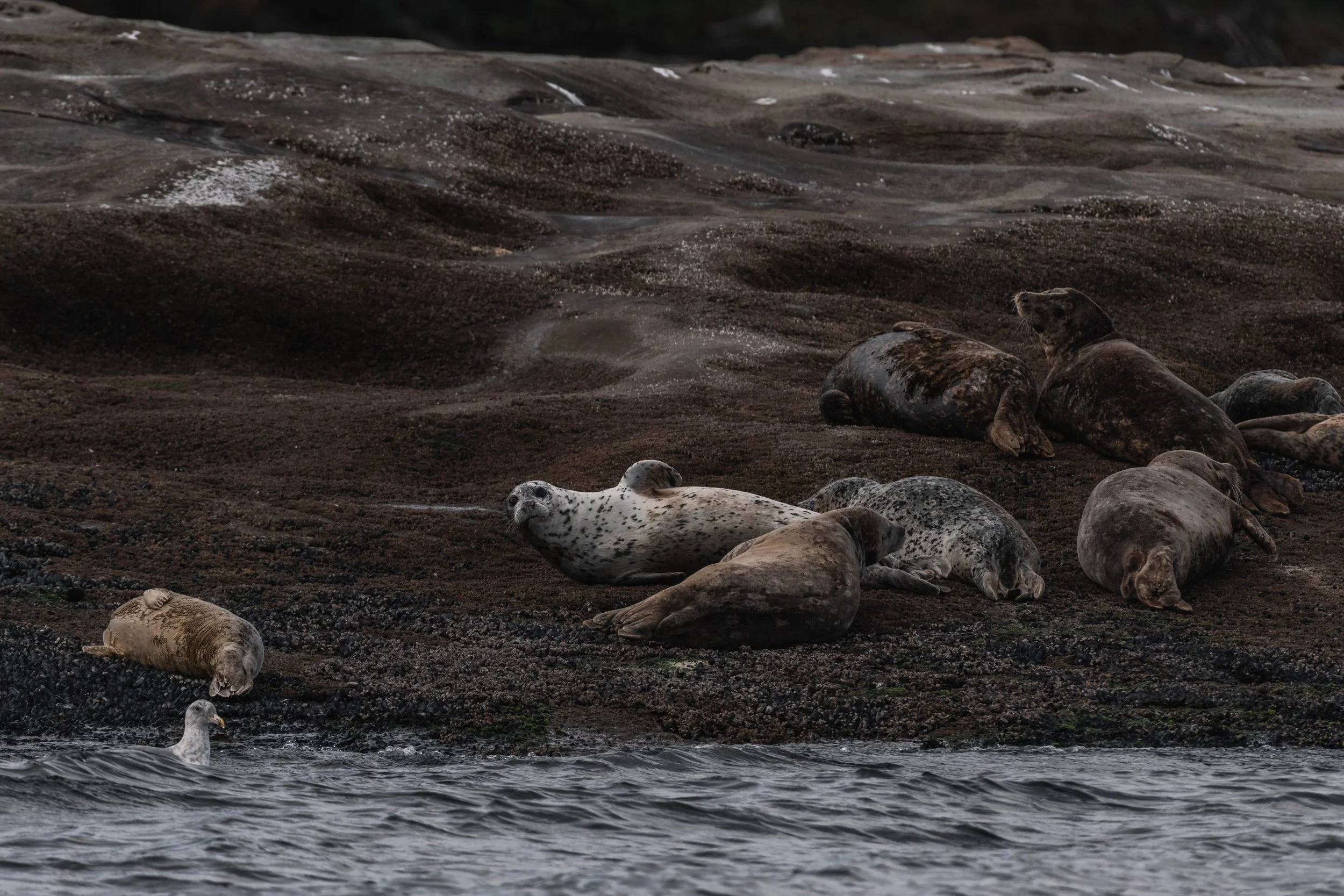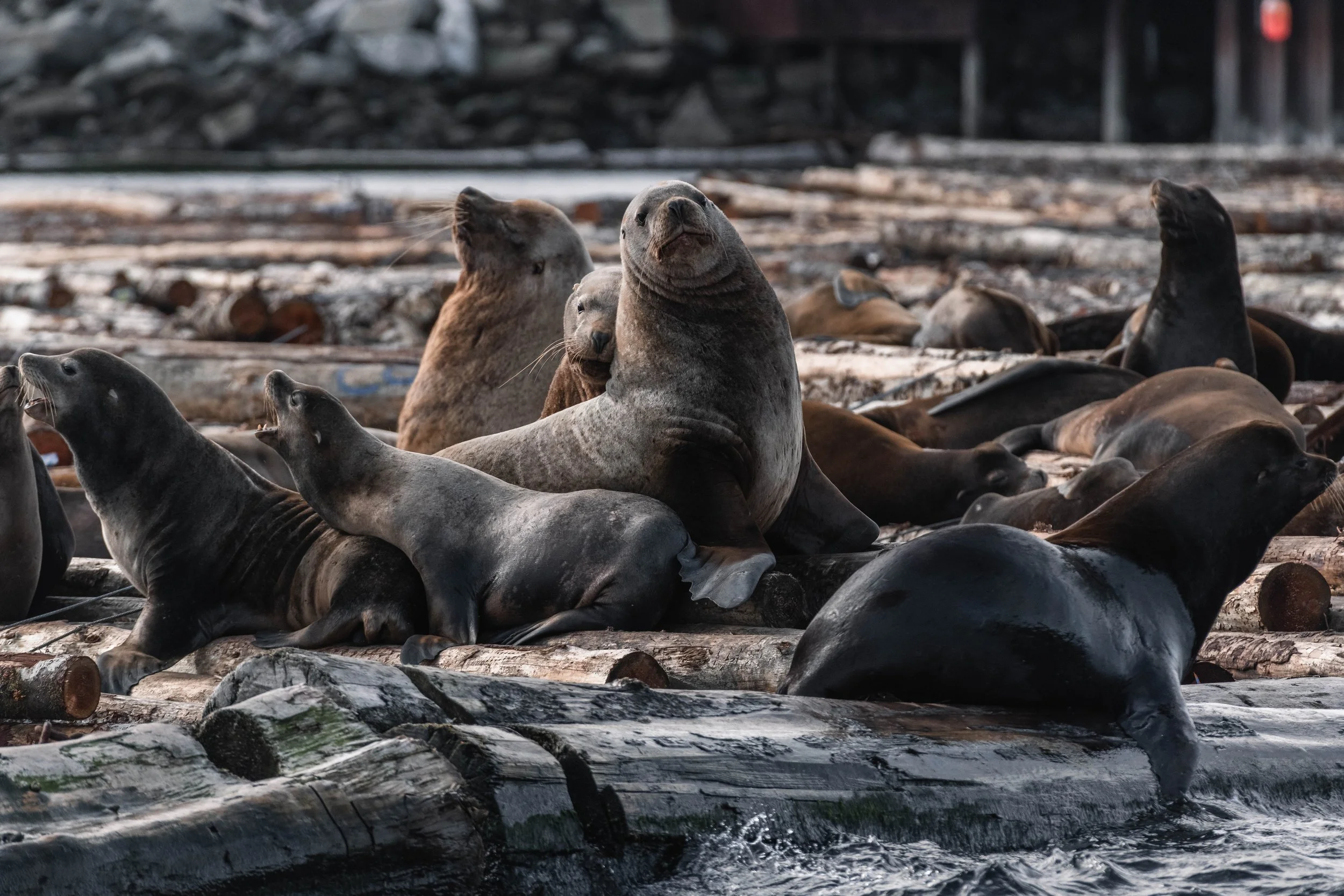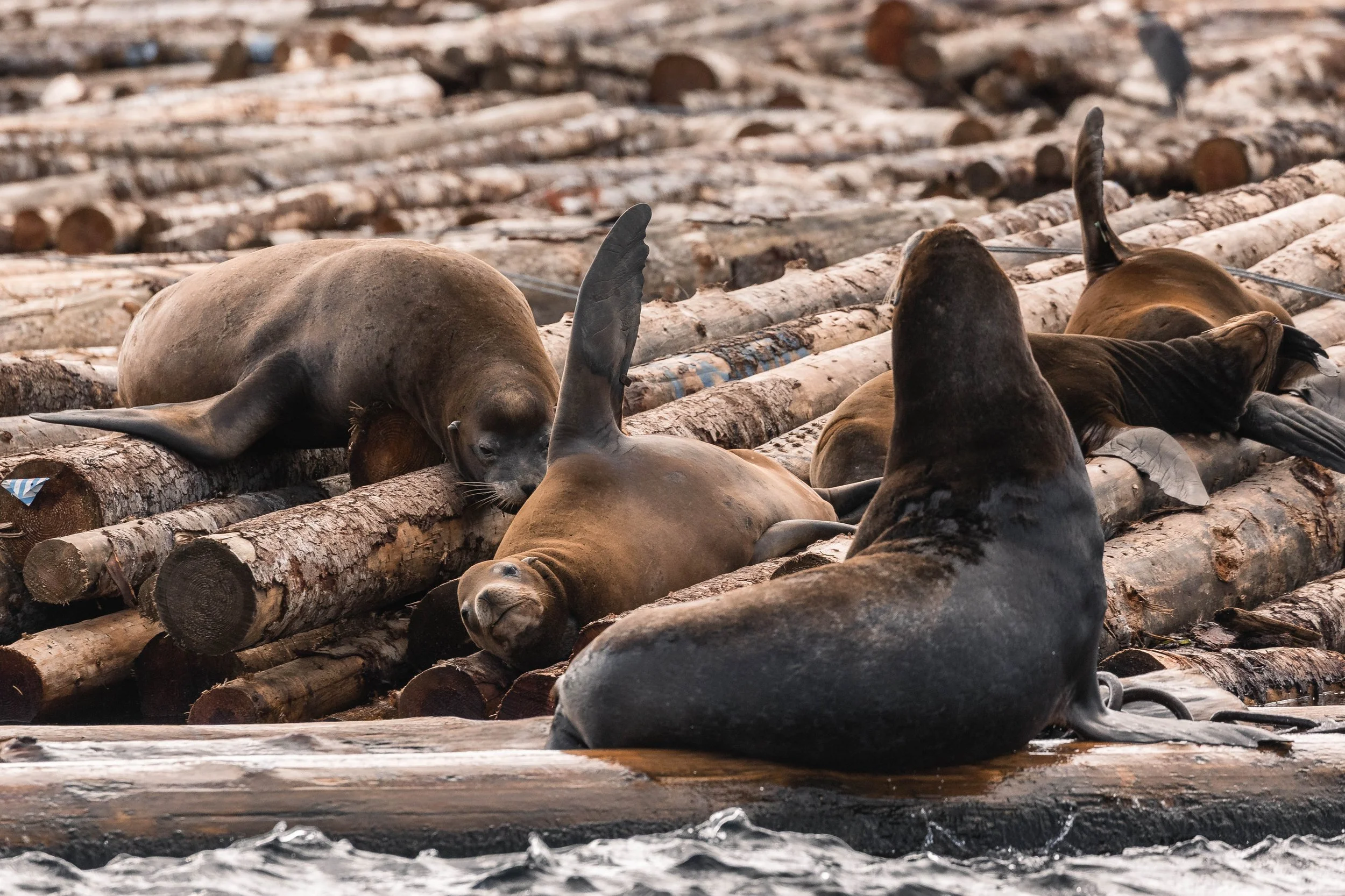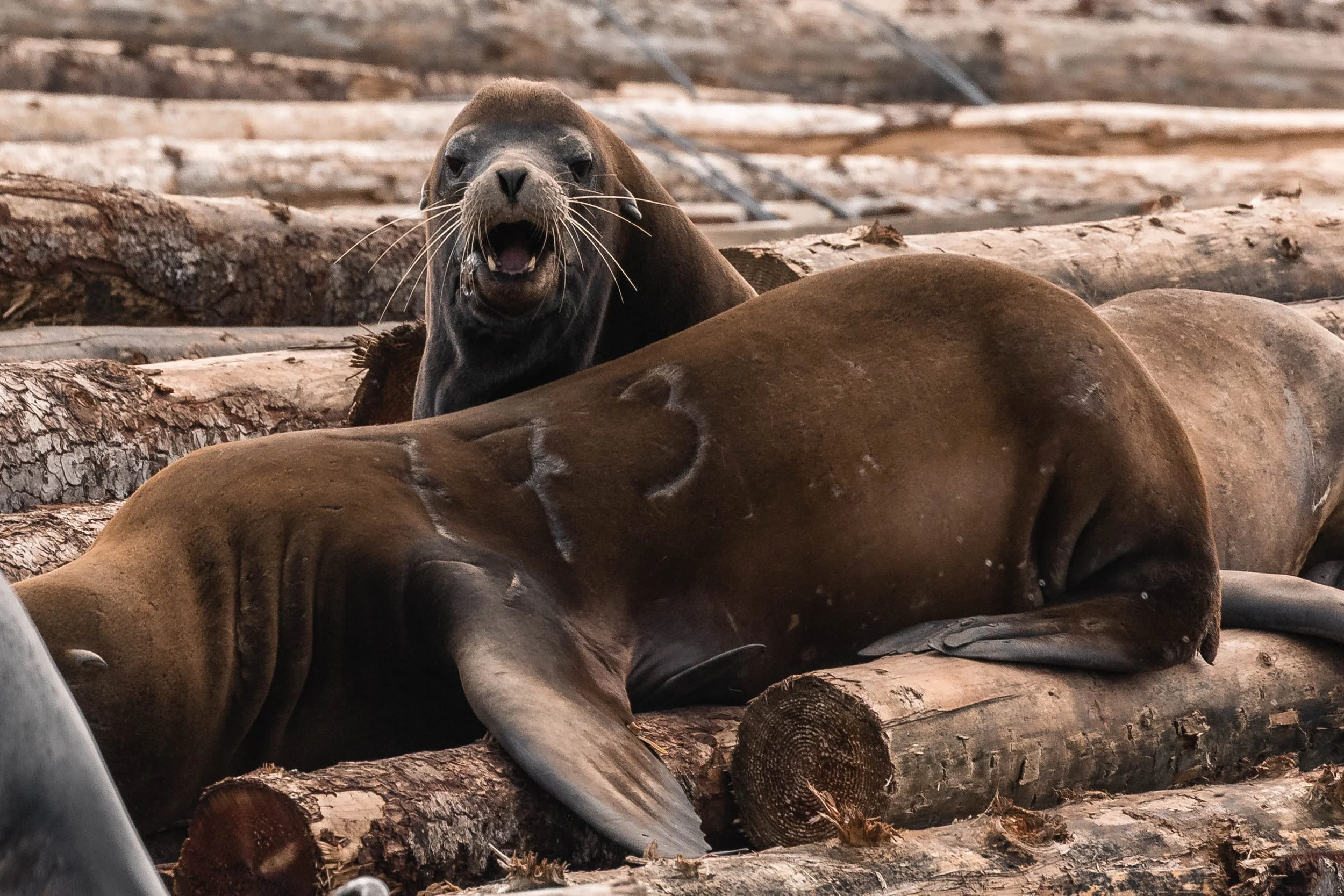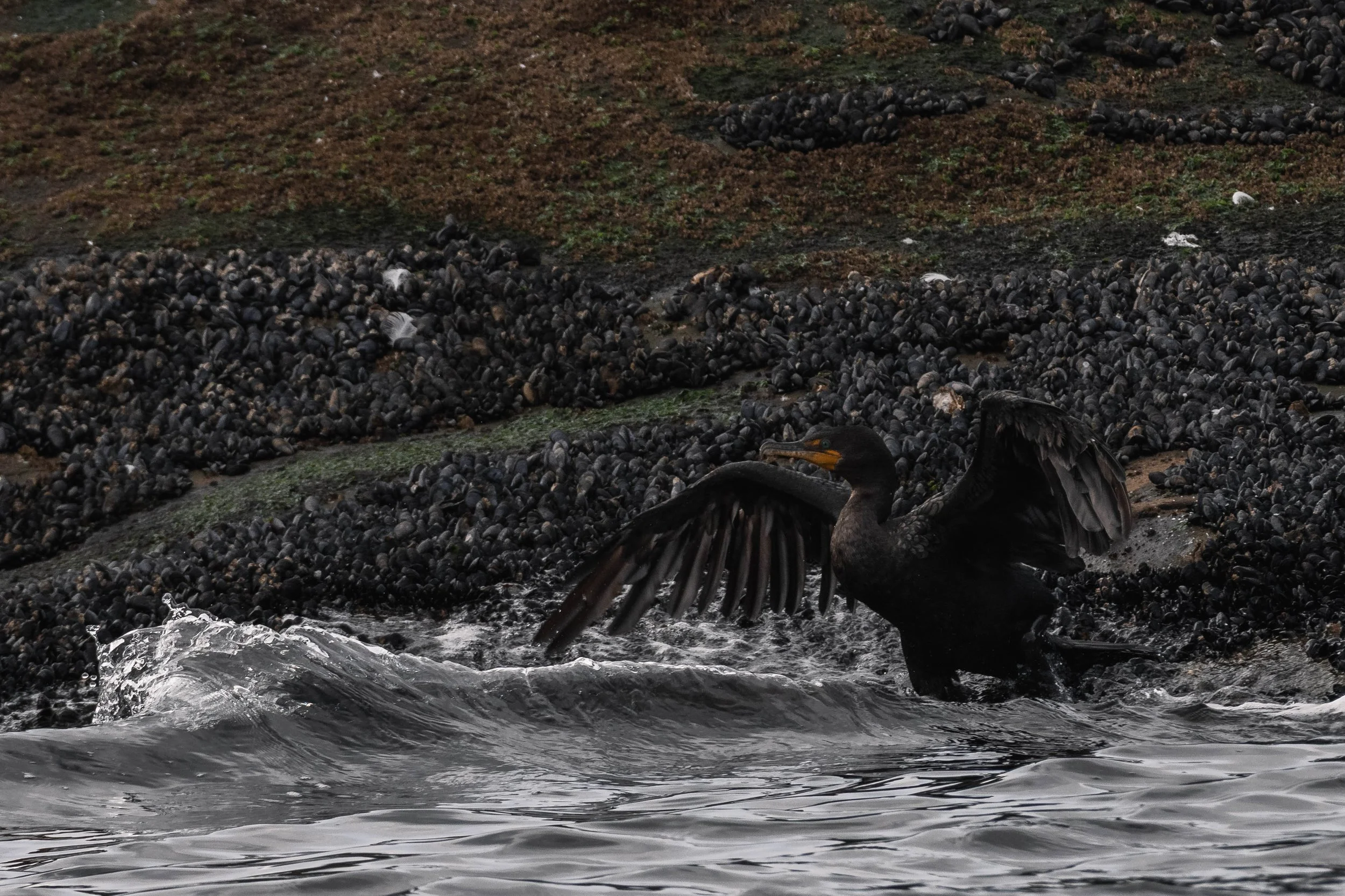October 4, 2025 - A handfull of humpbacks in the SOG
This afternoon, both of our open vessels, Cascadia and Keta, set off from Nanaimo under moody fall skies and calm seas. We never quite know what the ocean will share with us, but every trip holds the promise of something extraordinary.
As we scanned the horizon for the telltale mist of a whale’s blow, it was hard not to think about how different these waters once were. For much of the 20th century, humpback whales were nearly wiped out along the British Columbia coast due to commercial whaling. By the 1960s, sightings had fallen to nil, a heartbreaking reminder of how fragile life in the ocean can be.
But nature is resilient. In 1997, a single female humpback was sighted off the coast of northern Vancouver Island. Researchers named her Big Mama, and her story has since become one of hope and renewal. Big Mama was one of the first humpbacks to return to these waters after decades of absence, and in the years since, she’s brought eight calves into the world, helping to repopulate the Salish Sea one generation at a time.
And guess who we spotted today? None other than Big Mama (BCY0324) herself, gliding gracefully through the calm water alongside her newest calf, BCY0324 calf 2025! We were beyond thrilled to witness her once again in our waters, and she wasn’t alone. Travelling with her was another familiar fin Kappa (BCX0158), another well-known Salish Sea humpback, and her latest bundle of joy, Kappiroto BCX0158 calf 2025!
For a long time, scientists believed humpback whales were mostly solitary animals. But encounters like today’s tell a different story. Female humpbacks, in particular, appear to form social bonds that can last from hours to months, even reuniting season after season. They feed together, travel together, and share time side by side in what can only be described as friendship. The fact that Big Mama and Kappa were associating today, each with their calves, suggests there’s much more to humpback society than we once thought.
We still have so much to learn about their complex social world. To maintain these long-term relationships, humpbacks must be able to recognize one another across vast stretches of ocean. This humbling thought reminds us how intelligent and socially sophisticated these whales truly are.
While Cascadia spent time in this heartwarming “nursery,” Keta had discoveries of her own. Not far away, more blows were spotted, a flurry of misty plumes against the horizon. As the team approached, they found three humpbacks travelling together, with another two surfacing in the distance. Perhaps they were once part of the same group and had temporarily branched off, or perhaps they were on their way to reunite. Either way, it was an incredible sight to see so many giants sharing the same patch of sea.
We identified four of the five whales. We had Checkmate (BCY1104), Vanta (BCX1730), Chomper (BCX2192), and Corona/Phi (BCX1416). However, one remains a mystery for now, a reminder that, even after years of photo identification and research, the Salish Sea still holds many secrets.
After some wonderful moments with this second group, Keta turned to join Cascadia, where our guests were still grinning from ear to ear after spending time with two mother-calf pairs. But the excitement didn’t end there! Both vessels made a few wildlife stops on the return to Nanaimo, encountering some of the Salish Sea’s other charismatic residents.
Steller Sea Lions lounged across the rocks, massive, golden-brown pinnipeds that can weigh up to 2800 pounds! Their deep, rumbling roars filled the air, a sound you can feel as much as hear. Sharing the log booms were California Sea Lions, sleeker and smaller than their Steller cousins, easily recognized by their loud, barking calls.
Nearby, groups of harbour seals bobbed in the water like spotted marbles, curiously watching us as we drifted by. These true seals don’t have external ear flaps like sea lions and are surprisingly agile underwater, capable of diving for over 20 minutes in search of fish.
Overhead, cormorants perched on rocky outcrops, spreading their dark wings to dry after diving. Unlike many seabirds, cormorants don’t have fully waterproof feathers, which allows them to swim deeper in pursuit of prey, but means they need to dry off in the open air afterward.
By the time we turned for home, the clouds had deepened to a dusky purple and the sea was calm. We cruised back toward Nanaimo with full hearts and salt spray on our faces, reflecting on just how lucky we are to witness this chapter of recovery in the Salish Sea.
Once silenced by whaling, these waters now echo with the blows of humpbacks once again, a living testament to nature’s ability to heal when given the chance. Watching Big Mama and her eighth calf beside Kappa and hers felt like seeing history come full circle. The next generation is here, and the Salish Sea is alive with life once more.
Photos below taken by Aly Kohlman and Jordan Robinson.
A flock soars overhead. Photo by Jordan Robinson.
Thar she blows! Photo by Jordan Robinson.
Chomper’s dorsal fin. Photo by Jordan Robinson.
Chomper’s fluke. Photo by Jordan Robinson.
A good look at the blow holes. Photo by Jordan Robinson.
Vanta’s dorsal fin. Photo by Jordan Robinson.
Vanta fluking. Photo by Jordan Robinson.
Checkmate fluking. Photo by Jordan Robinson.
A fluke in the distance from Corona/Phi. Photo by Jordan Robinson.
Tail up! Photo by Jordan Robinson.
A rostrum above the surface. Photo by Jordan Robinson.
Kappa’s dorsal fin with Kappiroto surfacing in front. Photo by Jordan Robinson.
Kappiroto’s fluke. Photo by Jordan Robinson.
Kappa and Kappiroto fluking side by side. Photo by Jordan Robinson.
Just like mom! Photo by Jordan Robinson.
A sex shot of Kappiroto, we are pretty sure they are male as we do not see a hemispherical lobe found on female humpbacks. Photo by Aly Kohlman.
A little pectoral fin. Photo by Aly Kohlman.
This pec fin will one day reach a length of around 16 feet! Photo by Aly Kohlman.
Kappa fluking with Kappiroto beside her. Photo by Aly Kohlman.
Kappiroto going down. Photo by Aly Kohlman.
Big Mama’s dorsal fin alongside her calf. Photo by Aly Kohlman.
Big Mama fluking with Vancouver in the background. Photo by Aly Kohlman.
A high fluke from Kappiroto! Photo by Aly Kohlman.
Kappa and Kappiroto side by side. Photo by Aly Kohlman.
Kappa and Kappiroto fluking together. Photo by Aly Kohlman.
Kappa fluking. Photo by Aly Kohlman.
Big Mama’s babies fluke. Photo by Aly Kohlman.
Group photo! Photo by Aly Kohlman.
The front of Kappa’s tail. Photo by Aly Kohlman.
Kappa fluking as Kappiroto surfaces beside. Photo by Aly Kohlman.
Big Mama and her calf surfacing together. Photo by Aly Kohlman.
Big Mama with her calf fluking beside her. Photo by Aly Kohlman.
Harbour seals lounging around. Photo by Aly Kohlman.
How many birds can you spot in this photo? Photo by Jordan Robinson.
Check out the size difference between a mature male (right) and a juvenile male of female Steller (left)! Photo by Jordan Robinson.
A couple goofy faces from these Steller Sea Lions. Photo by Aly Kohlman.
A Steller Sea Lion growling away as usual. Photo by Aly Kohlman.
Commotion on the log booms. Photo by Aly Kohlman.
“I’m gonna say this gently, but I think you need deodorant!” This California Sea Lion probably. Photo by Jordan Robinson.
This California Sea Lion has a brand, and a friend with a dirty face! Photo by Jordan Robinson.
A cormorant drying off from a recent dive. Photo by Aly Kohlman.

